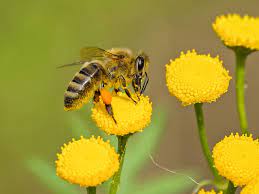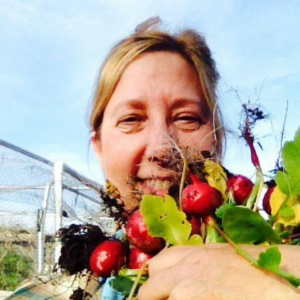Gilroy and South Bay Extended Weather Forecast
Your Garden … with Kate Russell – Get ready, it’s that time to start planting your springtime seedlings
Published in the March 21 - April 3, 2018 issue of Gilroy Life Starting seeds is the joy of spring gardening in Gilroy. It reflects confidence in natural cycles, the self-discipline to plan ahead, and [...]
Take a Hike… with Mike Monroe: Get exercise hiking ridgeline while learning about an environmental hero
Published in the March 7 - 20, 2018 Issue of Gilroy Life For the first time, I missed my deadline for this column. My not-so-flimsy excuse is that I became caught up in the exciting news [...]
Volunteers plan to ‘reboot’ neglected Demonstration Garden
Organizers need to raise about $75K to build out 25 plots Published in the February 7 – February 20, 2018 issue of Gilroy Life Photo by Marty Cheek - Steven Stratton, Gilroy Demonstration Garden board [...]
Your Garden … with Sharon McCray: Healthy bee colonies will greatly improve food and flower production
Planting a bee friendly garden is a simple task.

By Sharon McCray
 One third of every bite of food is a direct result of pollination by bees. Alfalfa for beef, fruits and vegetables and almonds, to mention just a few. The average cost for a two week rental of a bee hive to pollinate the California almond crop is about $3,000.
One third of every bite of food is a direct result of pollination by bees. Alfalfa for beef, fruits and vegetables and almonds, to mention just a few. The average cost for a two week rental of a bee hive to pollinate the California almond crop is about $3,000.
Honey bees were first imported into the U.S. about 1853 and most originated from Italy. This helps explain why so many look to dandelions and “wild” mustard for pollen as these are the ancient food their ancestors grew up on.
Using common sense and available information will help promote healthy bee colonies and greatly improve food and flower production. Research shows that by placing honey bee hives in almond orchards increased fruit production 10 times over. A pretty good investment according to the experts.
 Planting a bee friendly garden is a simple task. First remember to avoid any pesticides, especially the neonicotinoids used to suppress weeds. These two are the primary reason for the serious decline in honey bee populations. Another reason for the serious decline include the abundance of plants that are toxic to bees and wildlife in general.
Planting a bee friendly garden is a simple task. First remember to avoid any pesticides, especially the neonicotinoids used to suppress weeds. These two are the primary reason for the serious decline in honey bee populations. Another reason for the serious decline include the abundance of plants that are toxic to bees and wildlife in general.
Our highways and farms are graced with oleanders. They are sturdy plants, very drought tolerant but deadly to animals if ingested and the pollen is toxic to bees. Locally, nurseries are doing a fairly good job of identifying plants that will support pollinators and a tag with a honey bee strategically placed on the label will help guide us toward bee friendly plants.
Unfortunately, there are many other plants that are toxic including rhodendrons and azaleas. Perhaps that is why we have such difficulty growing them in Santa Clara County. Those gorgeous Trumpet Flowers can cause brood death and every part of the plant is poisonous to humans. Another plant, newly developed, the Star Gazer Lily produces a pollen that is poisonous to bees.
 Being aware while choosing what to plant in a bee friendly garden is an important element of a healthy bee populations. Pollen from amaryllis can produce toxic honey. California native buckeye can also produce toxic honey. Please bear in mind, bees need to consume a great deal of pollen and nectar for the toxic tendencies to actually produce an issue. To learn more about plants toxic to bees, “www.helpabee.org” is a good starting place.
Being aware while choosing what to plant in a bee friendly garden is an important element of a healthy bee populations. Pollen from amaryllis can produce toxic honey. California native buckeye can also produce toxic honey. Please bear in mind, bees need to consume a great deal of pollen and nectar for the toxic tendencies to actually produce an issue. To learn more about plants toxic to bees, “www.helpabee.org” is a good starting place.
It is also important to know bees need pollen and nectar on a year-round basis. Sunflowers and similar plants, provide a good source of summer pollen as do oak and pine trees common to our valley. Tree dahlias and other winter flowering plants will do much to help sustain bees throughout a long winter. It is interesting to note that cold does far less harm to bee populations than water. Honey is water soluble and while bees need water to survive, they cannot tolerate getting wet. Setting out a small flat dish of water, with rocks to aide in access, will serve the bees well.
Because bees vision is much different than other animals, they do not typically see reds, so flower color is not important, however, yellows and purples seem to attract more bees. Clovers, dill, yarrow, lavender are some good choices as pollen producing plants. Some great nectar plants include borage, Echiums, Goldenrod, lemon balm and plants in the aster family.
Sharon McCray is a California native living in Santa Clara County since 1959. She became certified as a University of California cooperative extension master gardener in 1992 and a UCCE master naturalist in 2015. She hosts a monthly radio show on KKUP public radio and is now retired.


